TRANSIT TALK--Regarding the purported 10% drop of mass transit passenger ridership, I will quote from Mark Twain’s Own Autobiography: The Chapters from the North American Review. “Figures often beguile me, particularly when I have the arranging of them myself; in which case the remark attributed to Disraeli would often apply with justice and force: ‘There are three kinds of lies: lies, damned lies and statistics.’” As one who has difficulties with numbers I know how it feels.
But here’s a statistic attributed to myself: I am a regular transit rider, going back to 1992. I own a car for use, but my commitment to trying to reduce the worst air pollution in the nation, and the continuing and very worrying threat of climate change from burning carbon gases (how’s this February, 2016 winter heatwave working for you?) keep me riding transit.
Wendell Cox’s attempt through statistics to rebut Ethan Elkins’ criticism of the original Los Angeles Times article which started this noise has left me quizzical. And his buyer’s remorse over his amendment to Proposition A, a measure providing nearly all of the local funding for rail systems for a decade of construction, left me disappointed.
I followed Cox’s link to newgeography.com which provided statistics to back up his buyer’s remorse and to buttress Thomas A. Rubin’s statistics against the construction of the region’s rail network.
Again, I am lousy with numbers, but in that article I followed, as I could, the statistics on the change of transportation patterns:
Census Bureau data indicates that the employment access share of transit in Los Angeles County has declined modestly, from 7.0 percent in 1980 to 6.9 percent in 2013 (including Metrolink). Driving alone increased from 68.7 percent to 72.7 percent, while carpool commuting dropped from 16.8 percent to 10.0 percent. Outside of driving alone, the largest increase occurred in working at home rising from 1.5 percent to 5.2 percent (Figure 3). Unlike transit, working at home requires virtually no expenditures of public funds. Transit one-way work trips increased 77,000 daily, while driving alone increased by 947,000 and working at home increased 182,000. Carpools suffered a large loss.
Using my admittedly unprofessional statistical abilities, I did some basic math and made my own interpretations. While newgeography points to a modest decline in the “Work Trip Share” of transit -- 6.9 percent down from 7.0 percent -- I would say that the needle has barely moved. However, while drive alone increased four percent, it was offset by an almost four percent increase of working at home. But carpooling decreased by nearly seven percent. Walking decreased nearly one percent, and other remained the same.
Where did that six percent decrease in carpooling go?
If the increase of driving alone is offset by working at home, and carpooling suffered a dramatic loss (which further bolsters the point that widening the 405 Freeway in the Sepulveda Pass will not pay off) and transit ridership was nearly the same, how could it be that there was a 10 percent drop in transit ridership?
Again, I’m lousy with math; there may be an answer somewhere, but I don’t see it.
Furthermore, I completely disagree with Rubin and Cox’s refuting the idea of counting transit trips as “unlinked trips,” where every bus ride is considered a separate ride. As a transit rider, mostly buses, I support the unlinked trips counting of transit.
Before I go into my personal experiences, I must ask: when counts are taken of freeway capacity and gridlock, what methodology is used? Once a vehicle enters any freeway, is that considered the entire trip for every freeway, or if I drive on the San Diego 405 Freeway and then get onto the Santa Monica 10 Freeway, would that be considered two trips on two separate freeways?
Planning for budgets for freeway maintenance should depend how many trips are taken on each freeway. If all freeways are considered one, then the very short Marina 90 Freeway, which always has open lanes, should have the same wear and tear as the 405, and therefore receive the same maintenance funding. I know from driving on both that these two freeways are not in the same condition. The 405 is rutted, bumpy and gridlocked while the 90 Marina Freeway is not. The 405, due to greater use, requires a greater maintenance budget than the 90 freeway.
So, my experiences as a transit rider tell me that each trip on each and every bus or train should be counted separately, because, as a rider, I will make a transfer to a bus on a street separate from the previous bus, and those need to be counted as separate trips. I may transfer from one transit agency, say Culver City, to another agency such as Metro or Santa Monica. I assume that, when planning their budgets, these three independent transit agencies only count ridership on their buses or trains – the latter of which are exclusively Metro’s.
Today I rode six buses: in the morning it was Culver City, Regular and Rapid 6 northbound; Metro 720 westbound; and Santa Monica No. 1 westbound. In the evening I took the Santa Monica No. 3 Rapid southbound to another Culver City No. 6 northbound to a bus stop different than the one I used in the morning. For each bus ride it was a walk to the bus stop, wait, board the bus, pay the fare (through the TAP card, but that’s another story), and depart the bus. After that, I had to walk to the transfer bus stop, wait, board, pay fare, and exit. Again and again and again. All separate trips.
I am not complaining, because that is the nature of transit riding. This leads me to question the everyday transit riding experiences of Rubin and Wilcox. If, day in and day out, they rode buses and rails, they would know the personal experience of separate transit rides.
What is very disappointing is Rubin’s anti-rail stance and Wilcox’s buyer’s remorse for rail. Indeed, a great number of transit riders today are low to moderate income, as they assert, but Rubin and Wilcox seem intent on keeping them in the less favorable rider experience of bus use only.
I have nothing against buses. I rode six today. They are my transit mainstay.
Modern buses are a huge improvement over those I rode when I started riding transit in 1992. But there are limitations on their carrying capacities; they not only offer a lower transit riding experience, they also provide hindrances to it.
Rails are much smoother than the streets, and so is the ride. It’s worth every penny. The expense elevates the ride for lower and moderate income riders. The entering and departing trains provide a quantum leap for the better at the train stations; they are more expensive to build and maintain than buses and bus stops, but again, they offer better treatment for lower and moderate income riders.
I have exited buses that put me into a hole in the sidewalk. I have had to leap from a bus to a sidewalk to avoid stepping into a gutter full of water. I have nearly tripped over tree roots or broken sidewalks, or when the bus door opens, I have stepped onto a grassy sidewalk parkway which may be wet; and when sprinklers are on, we transit riders must walk out the door into the spray, trying not to slip on the wet grass.
These are not good transit experiences, and if you’re low income, or maybe just down on your luck, it’s the last thing you want or need.
I wonder if Rubin or Wilcox and other mass transit officials and experts have had these kinds of daily experiences that do not show up in statistics.
I know from driving and taking transit that, during the ever expanding rush hours, traveling by rail is as fast, and sometimes faster, than driving. The benefit of having extra time is priceless.
Absolutely, rail cost more, but the major cities of the world, the cultural capitals, dynamic and exciting mature cities where people are visible in the streets and not sequestered in the cocoons of vehicles, have extensive passenger rail networks.
The increase of rail construction cannot be confined to statistics. Its importance rises far above just the aspiration of being a better city and seeking the inspiration to make the city more humane and less mechanical. The question is, do we make ours a world class city, or do we remain middling, muddling along and not trying to improve transit rider experiences? Finally, do we do what is of benefit to all, and particularly for lower income people? That cannot be put into statistics.
(Matthew Hetz is a Los Angeles native. He is a transit rider and advocate, a composer, music instructor, and member and president and executive director of the Culver City Symphony Orchestra.) Edited for CityWatch by Linda Abrams.




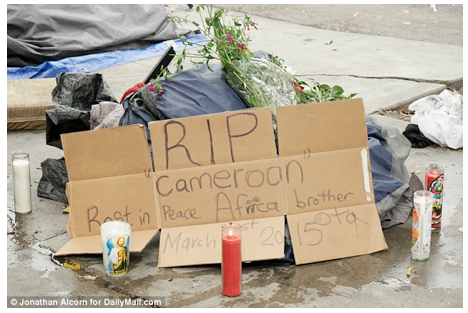
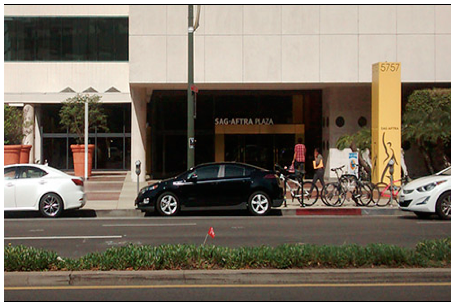









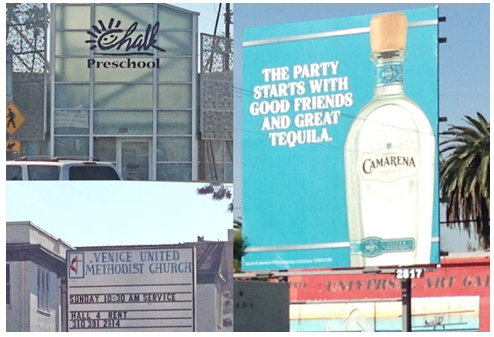

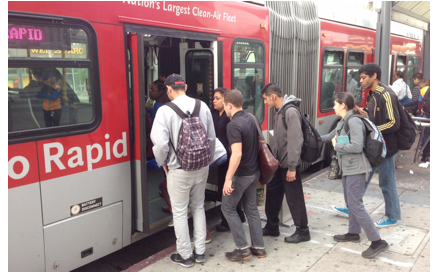
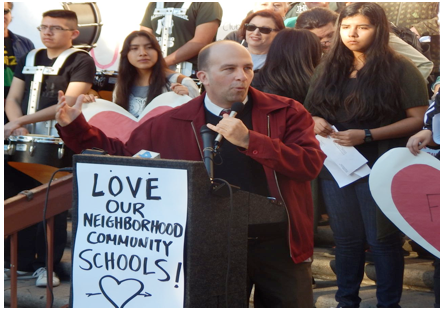
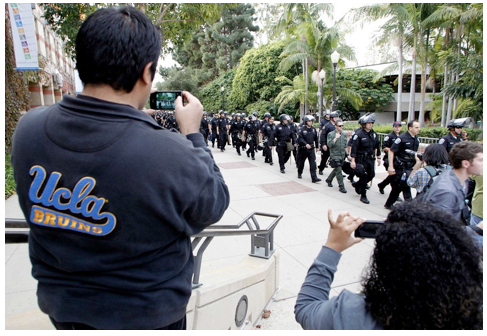


 One Iraq War veteran by the name of Christian Ellis survived his own repeated suicide attempts and, during his extended therapy, met up with someone who asked him the traditional question, "What would you do if you could do anything you wanted?" Ellis explains that he joked, "Write an opera." He didn't realize at the time that Charles Annenberg Weingarten not only was interested in the answer Ellis gave, he also had the means to start the process that has resulted in the opera Fallujah. Ellis didn't actually write his own opera, but he had an opera written about him. It opens in Long Beach on March 12.
One Iraq War veteran by the name of Christian Ellis survived his own repeated suicide attempts and, during his extended therapy, met up with someone who asked him the traditional question, "What would you do if you could do anything you wanted?" Ellis explains that he joked, "Write an opera." He didn't realize at the time that Charles Annenberg Weingarten not only was interested in the answer Ellis gave, he also had the means to start the process that has resulted in the opera Fallujah. Ellis didn't actually write his own opera, but he had an opera written about him. It opens in Long Beach on March 12.  Using art as therapy for PTSD
Using art as therapy for PTSD  Like Greek tragedies, opera can provide catharsis. This opera, as described by one of the cast members, is intended to do just that.
Like Greek tragedies, opera can provide catharsis. This opera, as described by one of the cast members, is intended to do just that. 












